- Manufacturer: Acer Predator
- Model: Triton 300 SE (2021) (2021)
- Part number: PT314-51s-76JL
- Price when reviewed: £1,399
- Supplied by: Acer
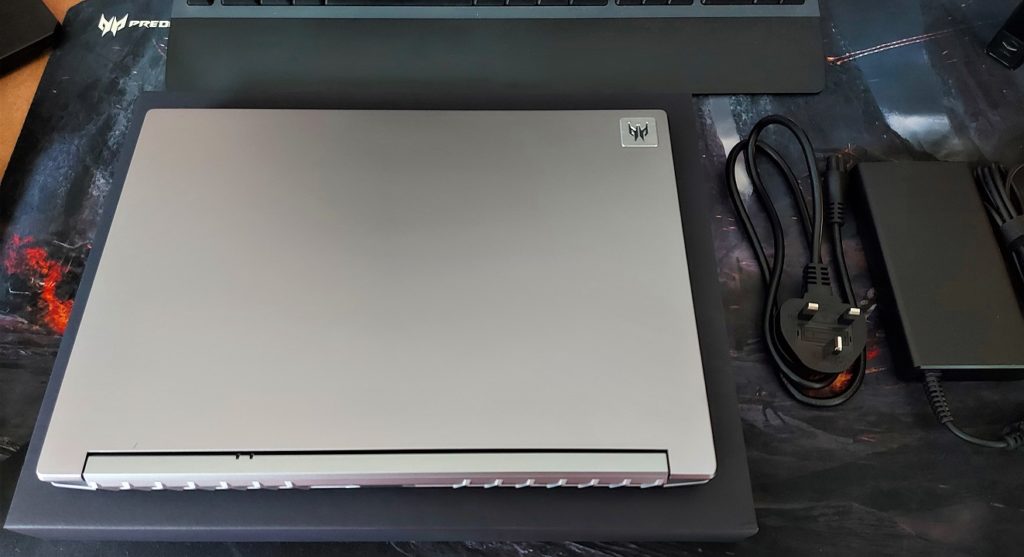
Acer Predator Triton 300 SE Review
Acer’s new variant of the excellent Triton 300 is actually more like a whole new laptop considering how much has been changed. It’s slimmer, lighter, and now has a 14” display and much more subtle styling and branding. Were it to have been finished in the typical matte black found on most gaming laptops, you could make the argument it looks a bit basic, but the sparkly silver finish gives the Triton 300 SE a uniquely stylish and professional look.
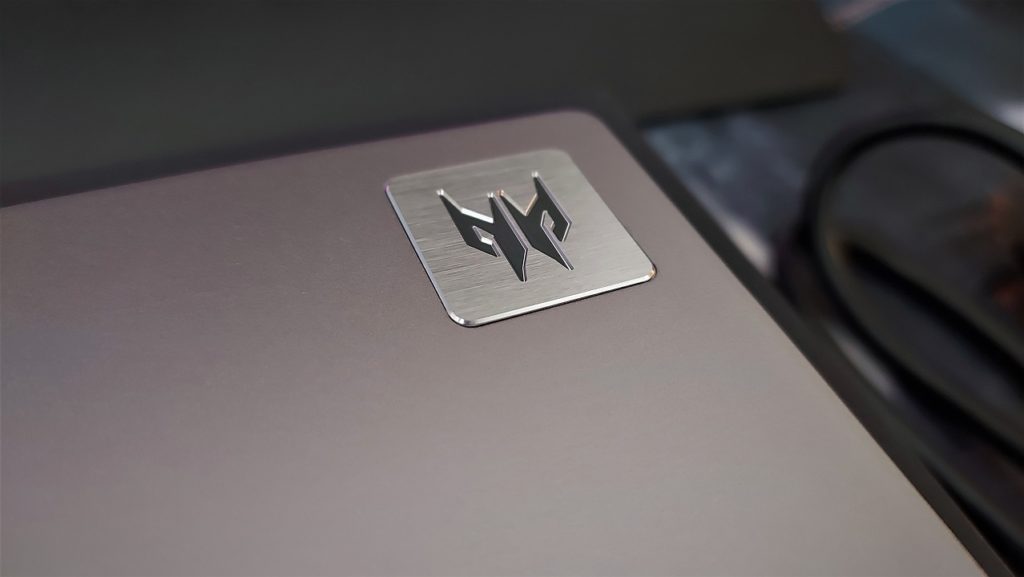
Build quality is very good, as we expect from Acer. The keyboard tray has very little give if you apply pressure to the centre, and there are no annoying creaks if you flex the chassis. Although we’ve seen complaints there is a lot of flex in the display, it’s a lot sturdier than previous generations of Predator laptops. Yes, it does flex a little, but only if you’re going out of your way to twist it, because why?
In the SE specification, the Triton 300 SE has an 11th-gen Intel i7-11370H, an Nvidia GeForce RTX 3060 6GB (75W TGP – but there’s good news to come here), 16 GB DDR4-3200, a rapid 1TB M.2 SSD and a 144Hz 1080p display.
The CPU is one of Intel’s power-efficient 35W quad-core processors, so it can’t quite keep up with some of the newer CPUs on the market when it comes to applications that rely on multi-core performance. This is by no means meant to be a workstation PC, though, and for regular everyday tasks, it blasts through with ease.
Gaming performance is very good out of the box, especially at this price point, but since the Triton 300 SE launched Acer has pushed out a firmware upgrade that boosts the GPU power from 75W to 90W. In some situations, the GPU only draws 60W of power, but on many games, we found this rose to as much as 85W with a resultant increase in performance.
As a rough indicator, we found performance improved by roughly 10% in terms of frames per second across almost every game. Even before we applied the update performance was good, but with the increase in GPU TGP, the Triton 300 SE is great.
There are still a couple of areas where we found the Triton 300 SE to be lacking, such as in its meagre offering of ports and high surface temperatures, but on the whole, this is a serious contender in the ultra-portable category.
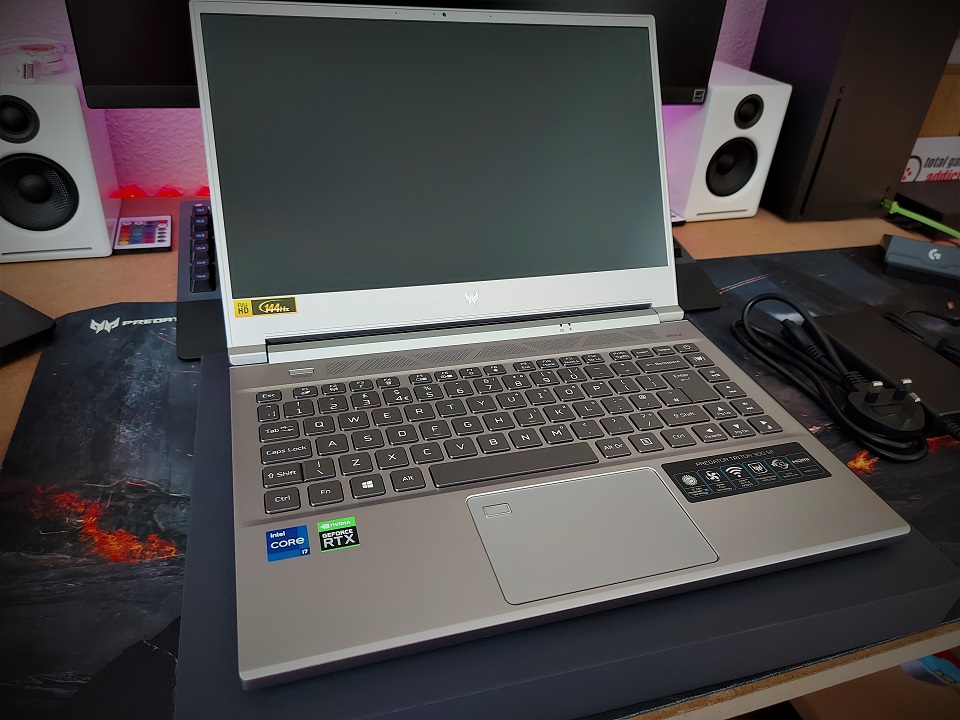
Internals and upgrades
Accessing the internals of the Acer Triton 300 SE is straightforward, providing you have the right tools. Nine T8 Torx screws secure the bottom of the case, and with the help of a pry tool it opens up easily enough.
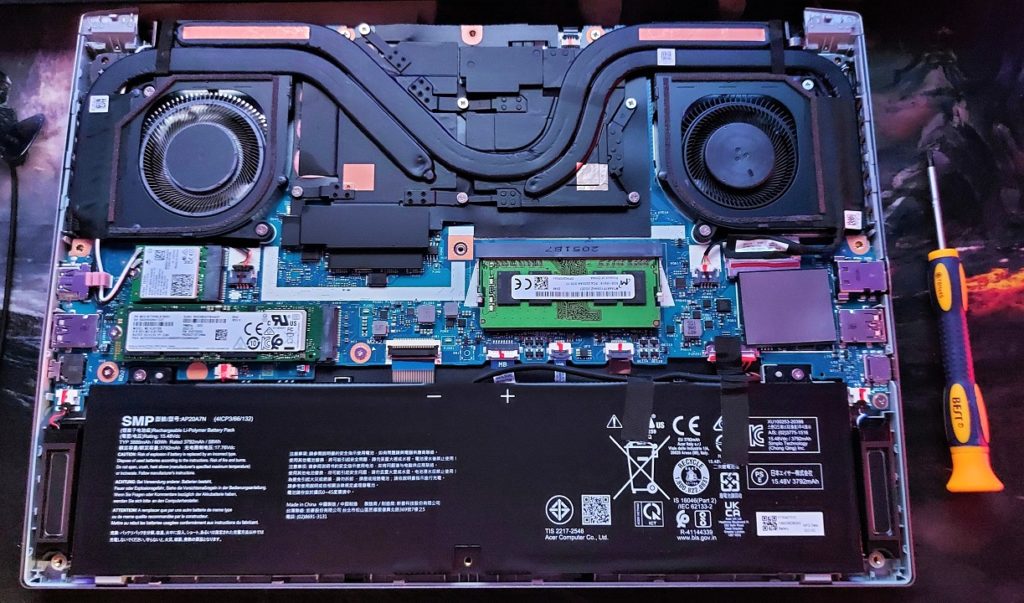
Much of the interior space is dominated by the 60WHr battery and cooling system for the CPU and GPU. Although there’s not a lot of wiggle room, the design should do a good job of keeping out dust and dirt.
There’s not actually much that you can upgrade in the Triton 300 SE. There aren’t any additional slots for storage expansion, and of the 16GB RAM, 8GB is soldered to the board. You can swap the 8GB stick for a 16GB one, which will give you the 24GB maximum supported, but it’s not necessary or arguably even worth it. Likewise with the SSD, as long as you get the 1TB M.2 NVMe SSD, that should be sufficient for most users.
Keyboard and trackpad
The Acer Predator Triton 300 SE has a tenkeyless layout, with a small bank of hotkeys along the right-hand side. These include a quick-access Predator Sense button and dual-assigned keys for volume/mute and media control.
It’s a traditional layout, and anyone familiar with notebooks will quickly get to grips with the various Fn key shortcuts. For some reason brightness up and down are reversed, but other than that, I had no issues with my use of the keyboard.
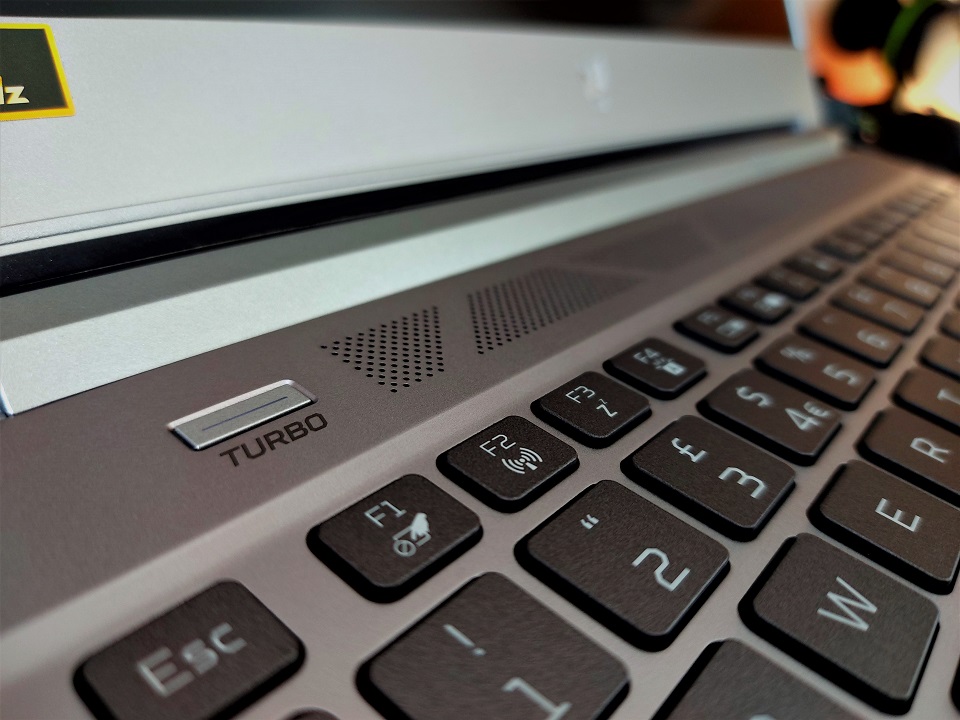
Although there is no per-key RGB lighting, the keyboard has a three-zone assignable backlight which can be configured how you like, with a handful of dynamic modes thrown in. For my preferences, I like to assign a static colour that complements the rest of my setup, and it was easy to use the RGB settings to match the colours perfectly.
The translucent font on the keys lets a good amount of light through, making them easy to see in any lighting condition; If you want to avoid drawing attention to yourself and leave the backlight off, the font is still clearly visible as long as there is a decent amount of ambient light.
Typing on the keyboard is very enjoyable, with the keys having plenty of travel and a weighty actuation that is well suited to gaming without that smushy feel common in cheaper notebooks. It’s also pleasingly quiet, which can come in handy on a device that lends itself well to gaming and working on the go. Aside from the lack of a dedicated numpad (for the obvious reason that it wouldn’t fit), there’s very little I could say against this keyboard.
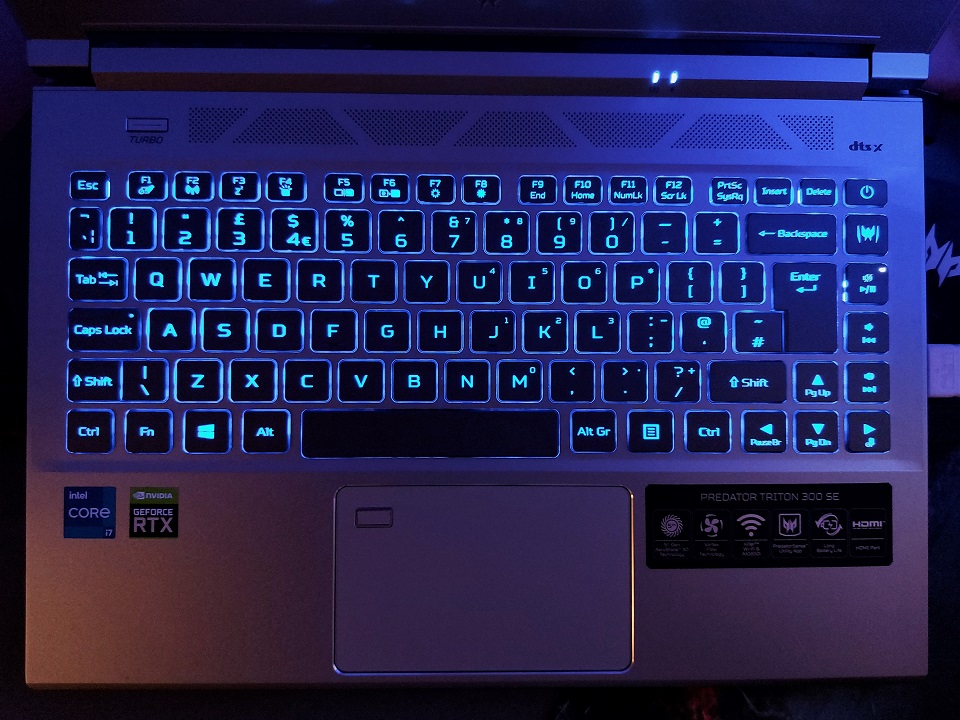
By necessity, the touchpad is a bit on the small side, but it’s super smooth and responsive. It is also where you’ll find the fingerprint reader for biometric security. The touchpad still works over the indentation where the fingerprint scanner is housed, but it does slow down the pointer speed slightly.
In my experience, the scanner was about 50/50 in its reliability, but that was without taking the time to go back and improve the initial read of my print. Although a fingerprint reader is a handy and desirable feature, the implementation here isn’t ideal, and I’d rather just have an unimpeded trackpad given the option.
Connectivity and I/O ports
The selection of ports on the Triton 300 SE is one of the weaker aspects of the design, with the notable omission of an ethernet connection. It has just three USB ports, an HDMI port and a 3.5mm combi-jack for headsets.
On the plus side, it is an HDMI 2.1 port, both USB-A ports are high speed 3.2 Gen2, and the USB-C Thunderbolt 4 port supports DisplayPort over USB-C and 100W charging. With a decent USB-C hub you can connect all the peripherals you need, as well as multiple displays, and crucially, provide an ethernet RJ45 port if needed.
On the left of the Triton 300 SE is the USB-C Thunderbolt 4 port, a single USB 3.2 Gen2 Type-A, and a power connector.
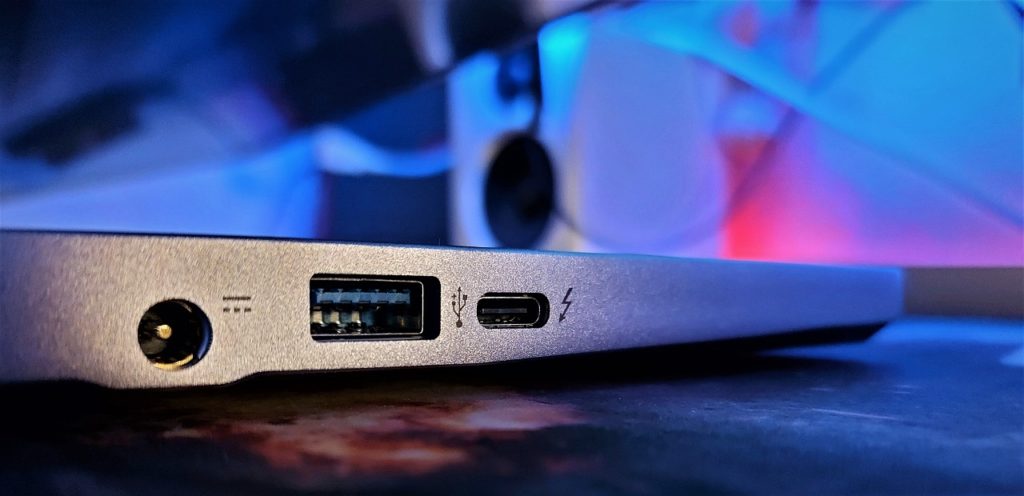
On the right side is a USB 3.2 Gen2 Type-A, HDMI 2.1 and the 3.5mm analogue port.
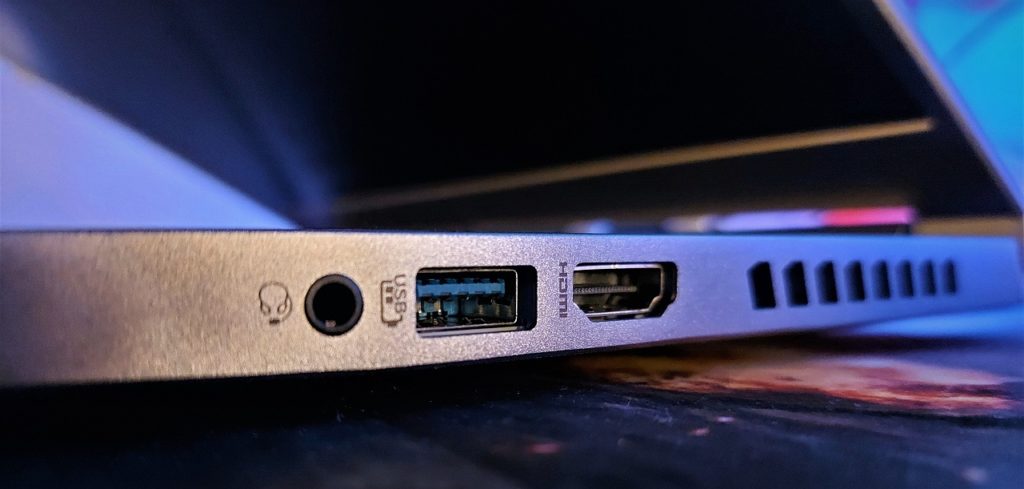
Without any ethernet connection, networking is handled purely by the Killer AX1650i (802.11ax) network card. We’ve tried this WiFi card on lots of laptops before, and the performance is excellent. The Killer control centre also has some excellent tools for prioritising network traffic, limiting bandwidth, analysing your WiFi signal and even acting as a network range extender. For many, an ethernet cable will always be preferable, but if you have no alternative to WiFi this is a damn good NIC (network interface card).
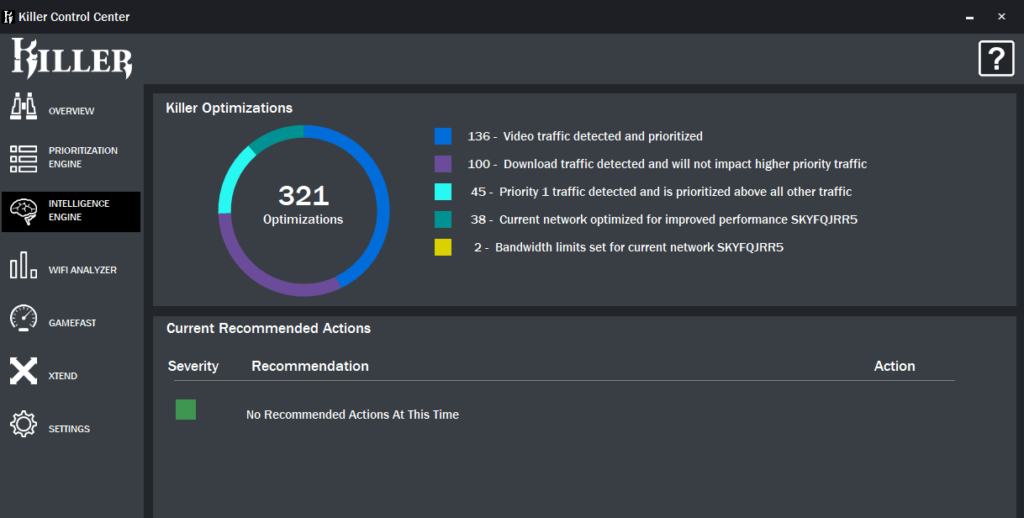
Display
I was hugely impressed with the screen on the Triton 300 SE. Colours pop, and it has the best contrast and black levels of any IPS display we’ve tested.
In its factory calibration, the display covered 96% sRGB, 71% AdobeRGB and 73% DCI-P3. This allowed the display to produce rich and vibrant colours, without any oversaturation, and with an average Delta-E (colour accuracy) of 0.74 which is excellent. Uniformity was consistent across the display, with no visible backlight bleed or IPS glow around the corners. Colour warmth was a touch on the cool side, measuring 7400K, but this was easily remedied by lowering the green and blue RGB within the settings.
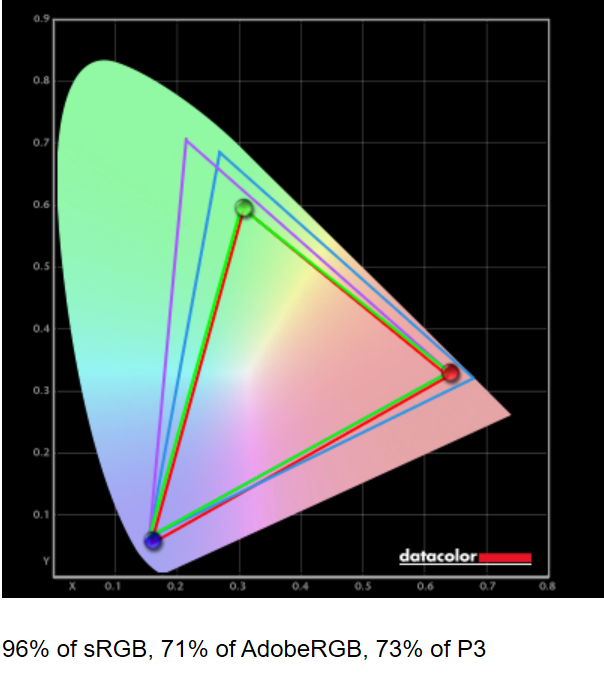
The native gamma very closely followed the 2.2 gamma curve in our tests. Peak brightness was slightly above average at 326 cd/m², but the black level of 0.19 cd/m² is excellent. These deep blacks allowed the Triton 300 SE to achieve a peak contrast level of 1700:1, which is superb for an IPS display. This makes playing games or watching movies with lots of dark scenes very enjoyable, without the washed-out blacks you frequently get from IPS panels.

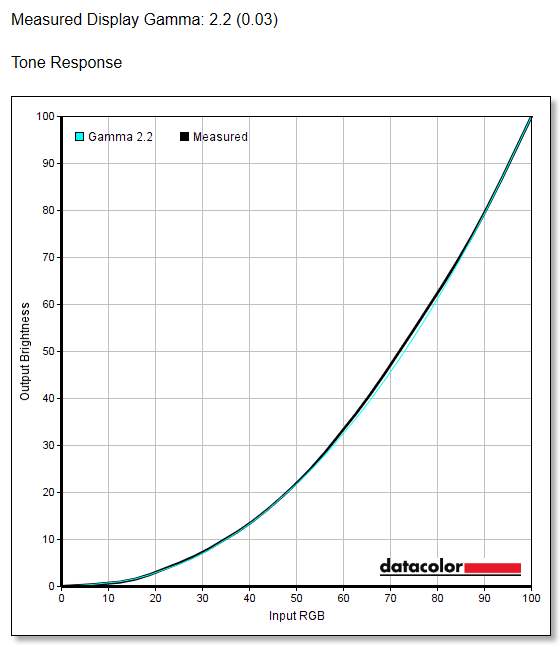
Viewing angles were excellent, with the image clearly visible from sharp angles, retaining colour vibrancy and contrast well when viewed off-centre.
The panel’s motion handling was particularly impressive, with tests showing only a trace of ghosting, no distracting smearing and no noticeable overshoot. This was when we were studying the display up close, too. In regular use, it’s essentially flawless.
It may only be a 1080p 144Hz display, but this is ideally suited to the CPU/GPU combo in the Triton 300 SE, with a frame rate that is at the limit of what it can max out in many popular competitive titles.
Side note for creatives: When calibrated, the Triton 300 SE was incredibly accurate. Average DeltaE was just 0.2, the measured whitepoint was 6495K, and the black luminance was 0.15 cd/m², resulting in a staggering contrast ratio of 2071.3:1 – perfect for colour critical work, even if the small screen size and lower resolution display may not be ideal.
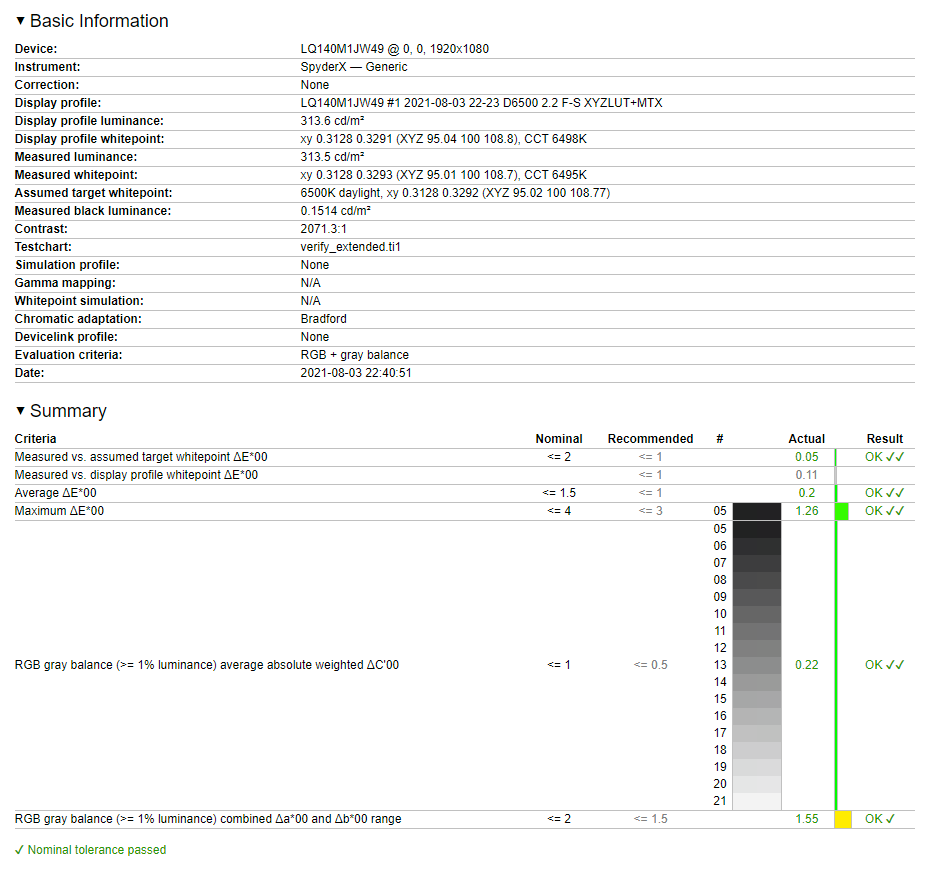
Performance
This is the first RTX 3060 laptop we’ve tested so far, but we do have plenty of systems from either side of this performance and price range to compare with. In comparison with the RTX 2060, 2070 Super and even a lower-powered variant of the 3070, the RTX 3060 in the Triton 300 SE performed brilliantly. In many cases, it surpassed what should be more powerful systems. When you factor in the price and relatively low power drain, it’s a stellar performance from the Triton.
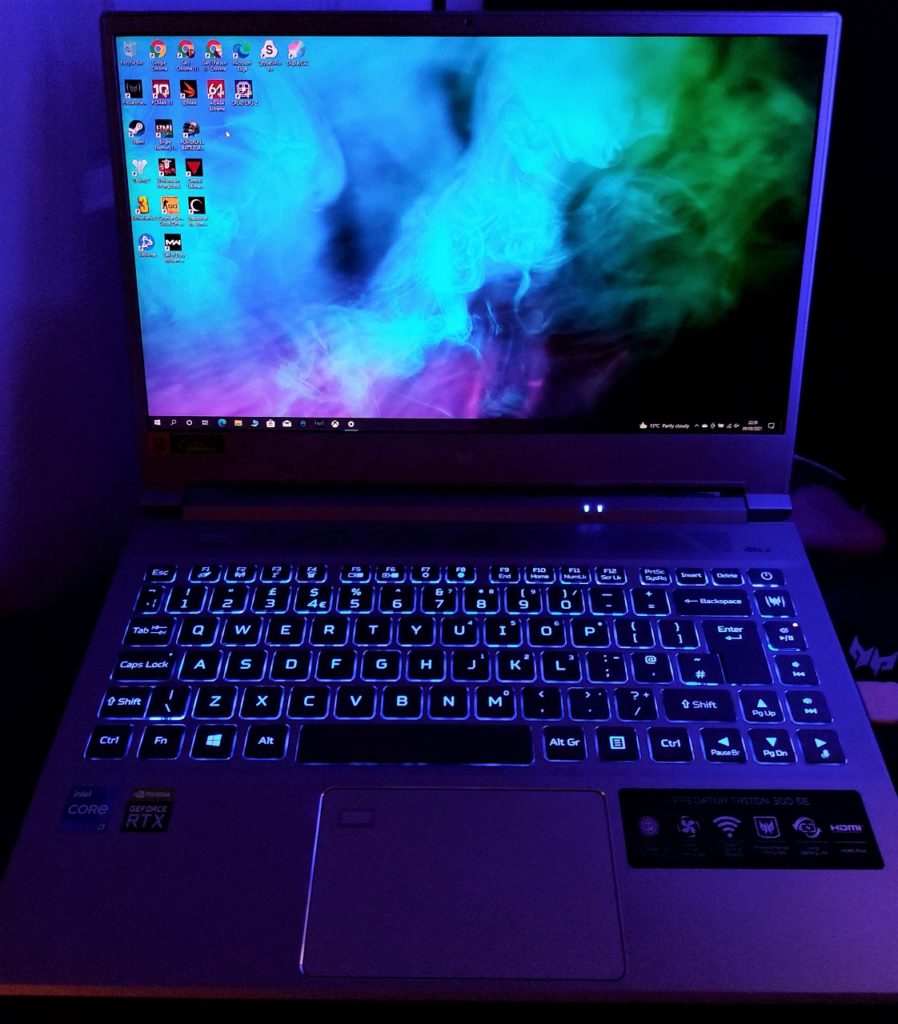
Before we get onto the gaming performance, we’ll quickly address the day to day performance of the Triton 300 SE. For my regular workload involving word-processing, video and photo editing and running a few sizeable spreadsheets, I had no problems with the Triton. Thankfully, we’ve reached a point now where even the most modest gaming system can handle everyday workloads effortlessly. Boot up and app launch times are rapid, and outside of the most demanding software, it’s likely to be ideal for the majority of people. Props to Acer for including a webcam; it’s only 720p and can appear a little fuzzy, especially in low-light situations, but it serves its purpose and will likely be a welcome addition for those who want a notebook that’s as comfortable for work as it is in a battle station setup.
Being able to connect to multiple 4k displays is a clear advantage for the Triton, as it allows you to have a lot more screen real estate for working or for watching high-res movies. If you have a monitor that supports KVM it’s as simple as rocking up at your desk, plugging in a single USB-C cable and getting straight to work. Less time setting everything up equals more productivity (at least that’s what you should tell your boss if you are pushing for a work from home upgrade).
Now, the gaming. When the Triton 300 SE first launched the GPU had a TGP of 75W, which is a little on the low end. Since then, however, Acer has released a firmware upgrade that increases the (potential) TGP to 90W, which is a substantial increase. I initially recorded the results before updating the firmware, but after seeing how much more performance I was getting I re-ran all of the benchmarks. Across the board, we saw up to and over a 10% improvement in frame rates.
The highest TGP we measured was on Borderlands 3 and CoD Warzone, which both averaged 85W. Shadow of the Tomb Raider and Control averaged 80W. Of the rest of our test bench games, these numbers fluctuated a lot more, with more CPU limited games dipping down as low as 60W. Despite this, the performance increases were consistent, and every game saw an increase following the firmware update.
At the native 1080p, you can hit a 60 fps minimum on all but the most demanding games without having to turn anything down from ultra. Competitive esports games can often max out the 144Hz panel, making this ideal for both AAA single-player experiences and multiplayer frag-fests.
On more powerful machines we test at 1440p and 2160p in addition to 1080p, but the modest RTX 3060 isn’t really cut out for gaming at those resolutions. If you do have an external display you want to plug into, most games will run OK, but you may need to scale back to medium settings or possibly run at 1080p to get a smooth experience.
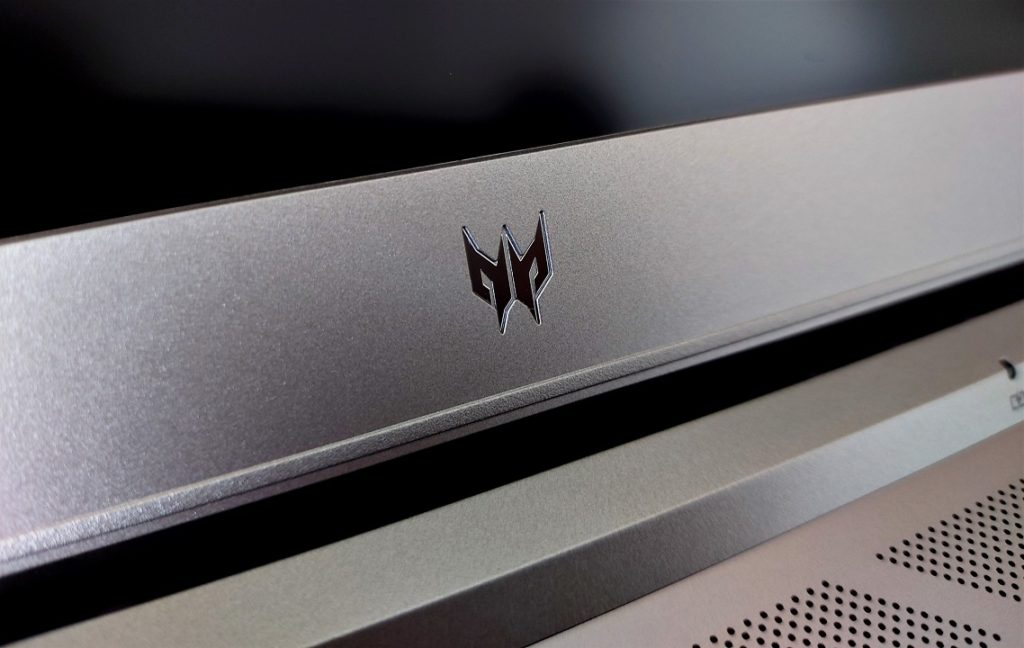
Benchmarks
All benchmark tests were carried out with the performance mode set to Extreme in the PredatorSense software, which overclocks the GPU and runs the CPU at its maximum, dynamically adjusting fan speed to keep everything cool. (Turbo mode is significantly louder, with the fans constantly running at full speed. Although it did lower the temperatures very slightly, it only resulted in a couple of extra frames, making Extreme mode the best option in my opinion.)
In-game settings use the Ultra preset (or equivalent) where available. If DLSS was available, it was set to performance mode unless stated otherwise. (If an RTX game comfortably runs above refresh rates you are happy with, we recommend switching DLSS to Quality, as it makes a noticeable difference to image clarity.)
All results were recorded using the inbuilt display.
Gaming Benchmark Results
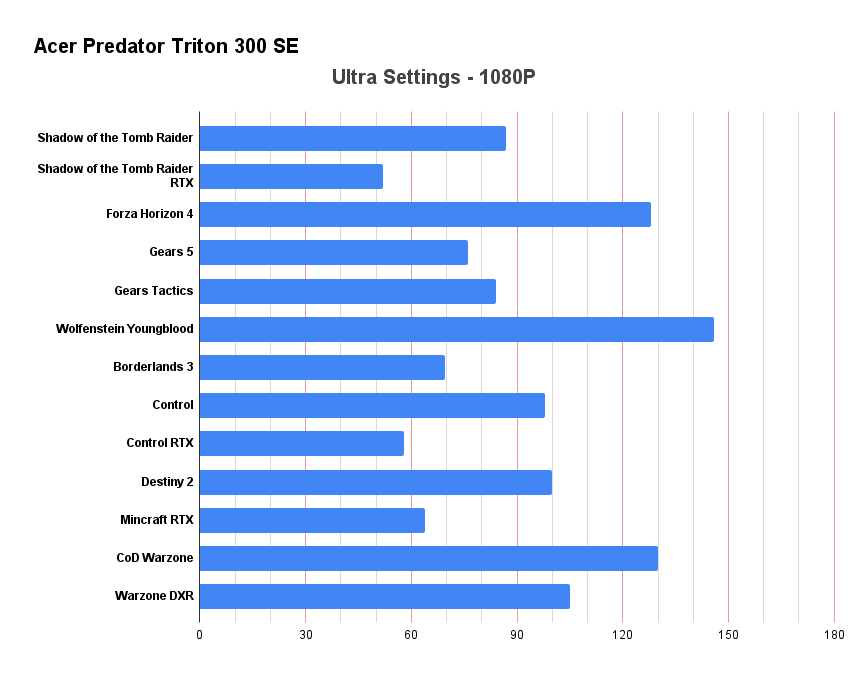
Gaming performance comparisons
We’ve listed a range of computers with varied GPUs for comparison, including the Triton 300 with RTX 2070 Super. This should give you an idea of how it compares against a range of processors and system configurations. We find these comparisons useful for consumers looking for not only the best overall performance but the best value, too.
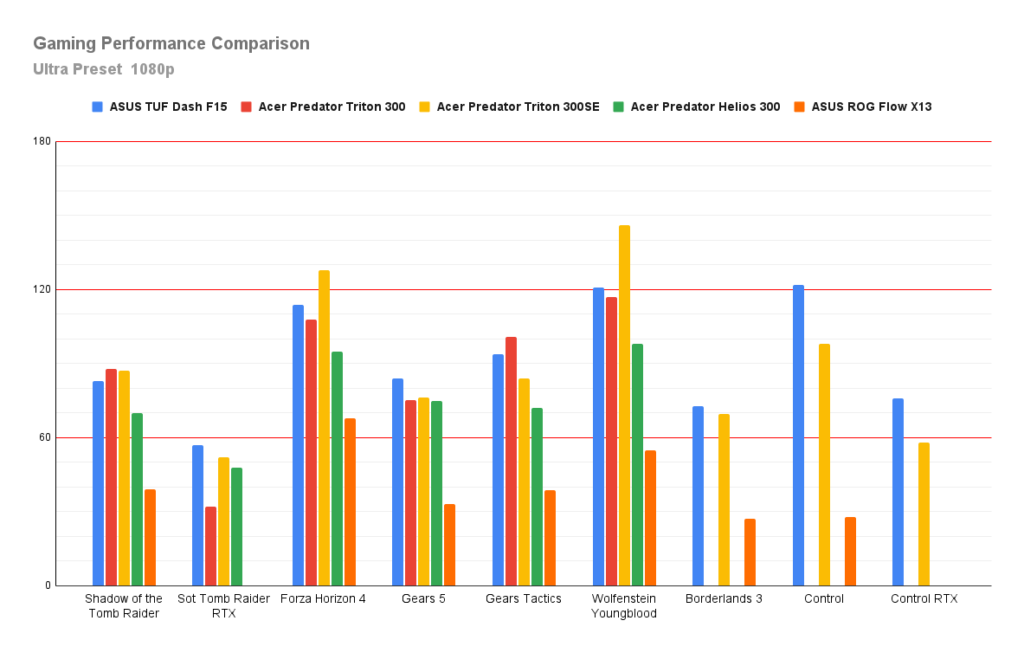
| Laptop/PC | ASUS TUF Dash F15 | Acer Predator Triton 300 | Acer Predator Triton 300SE | Acer Predator Helios 300 | ASUS ROG Flow X13 |
| Model | FX516PR (2021) | PT315-52 | PT314-51s | PH315-53 (2020 | GV301QH (2021) |
| Processor | i7-11370H | i7-10750H @ 2.60 GHz | i7-11370H | i7-10750H | R9 5980HS |
| GPU | RTX 3070 8Gb | RTX 2070 Max-Q 8Gb | RTX 3060 6Gb | RTX 2060 6Gb | GTX 1650 4GB |
| GPU TGP/TDP | 80W/85W | 90W | 35W/40W | ||
| Ram | 16GB DDR4-3200 (8+8) | 16GB DDR4-3200 (8+8) | 16GB DDR4-3200 | 20GB DDR4-3200 (16+4) | 32GB DDR4X-4266 MHz |
| SSD | 512GB M.2 NVMe SSD | 1Tb M.2 NVMe SSD | 1Tb M.2 NVMe SSD | 512GB M.2 NVMe SSD | 1TB M.2 (WD PC SN530) |
| HDD | n/a | n/a – 2 x M.2 slot, 1 x PCIe | n/a | n/a | n/a |
| Display | 1080p 144Hz | 1080p 144Hz | 1080p 144Hz | 1080p 144Hz | 1920×1200 120 Hz Pantone |
| Price | £1,299 | £1,399 | £1,399 | £1,299 | £1,499 |
System Benchmark Results
Cinebench R15
- CineBench – CPU (Single)(cb)
- (High-performance mode / Auto Fan): 200 cb
- CineBench – CPU (Multi)(cb)
- (High-performance mode / Auto Fan): 958 cb
- CineBench – GPU (OpenGL)
- (High-performance mode / Auto Fan): 138.29 fps
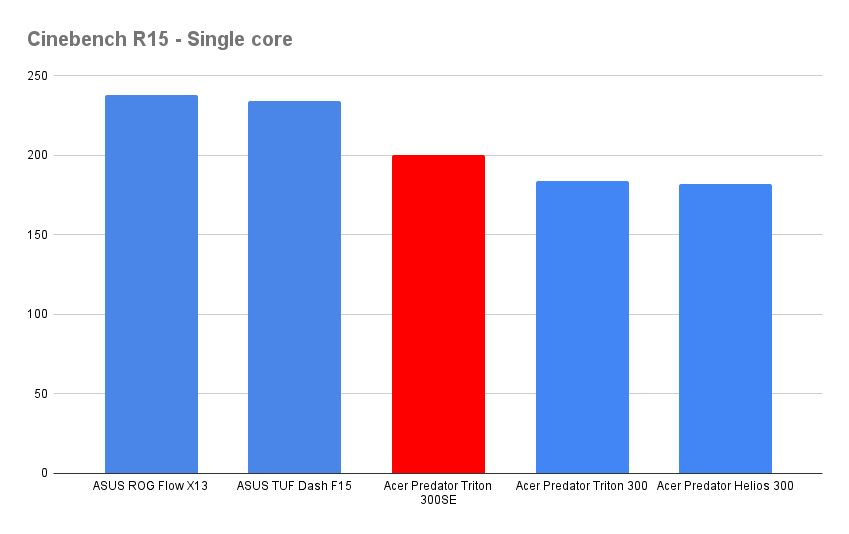
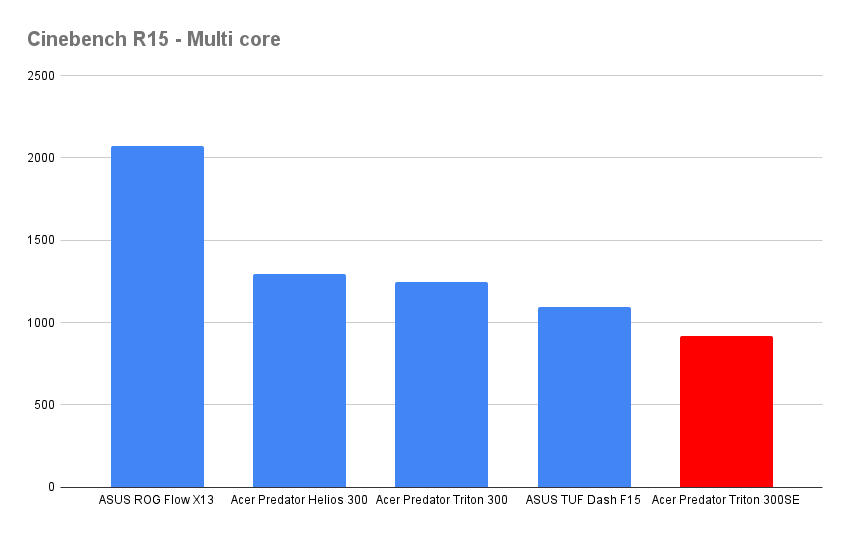
Cinebench R20
- CineBench – CPU (Single)
- (High-performance mode / Auto Fan): 520
- CineBench – CPU (Multi)
- (High-performance mode / Auto Fan): 2409
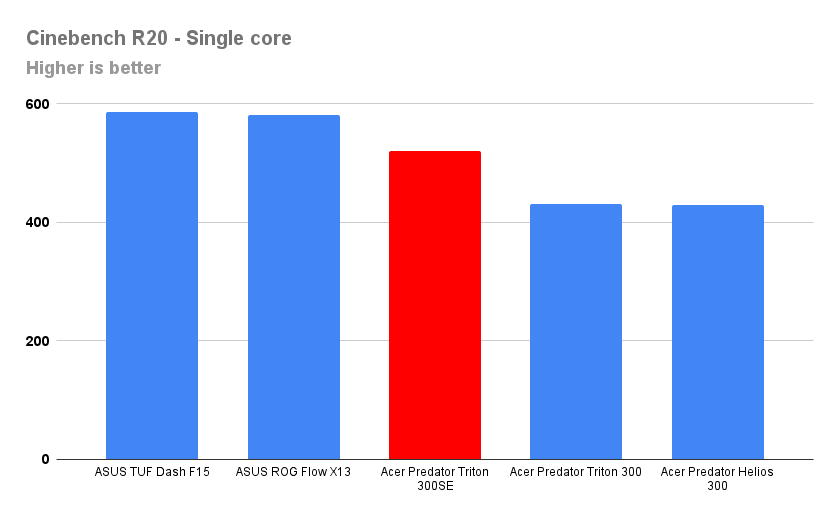
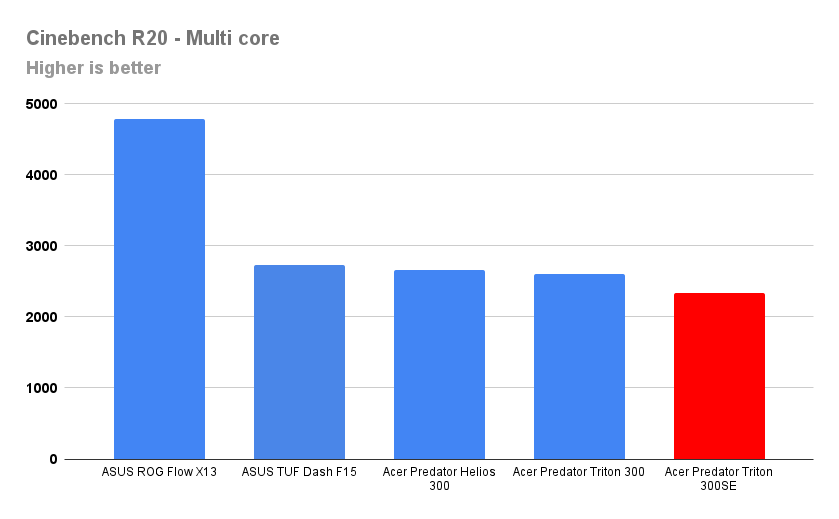
Cinebench R23
- CineBench – CPU (Single)
- (High-performance mode / Auto Fan): 1370
- CineBench – CPU (Multi)
- (High-performance mode / Auto Fan): 5609
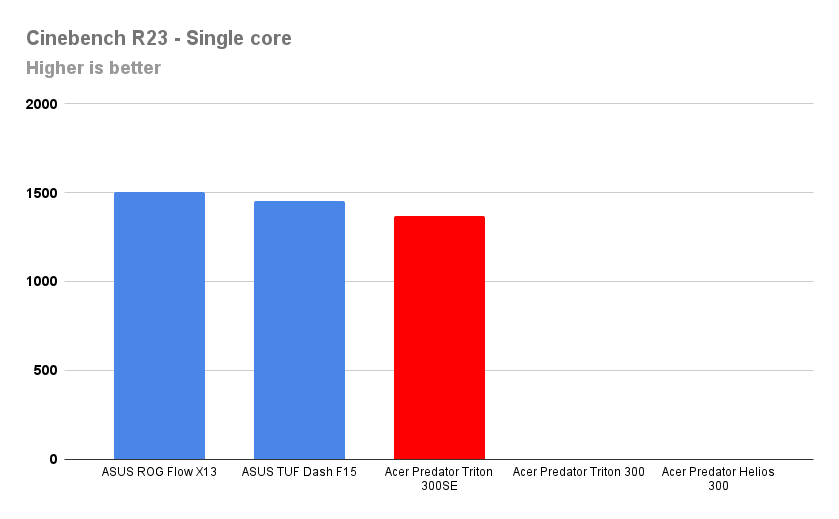
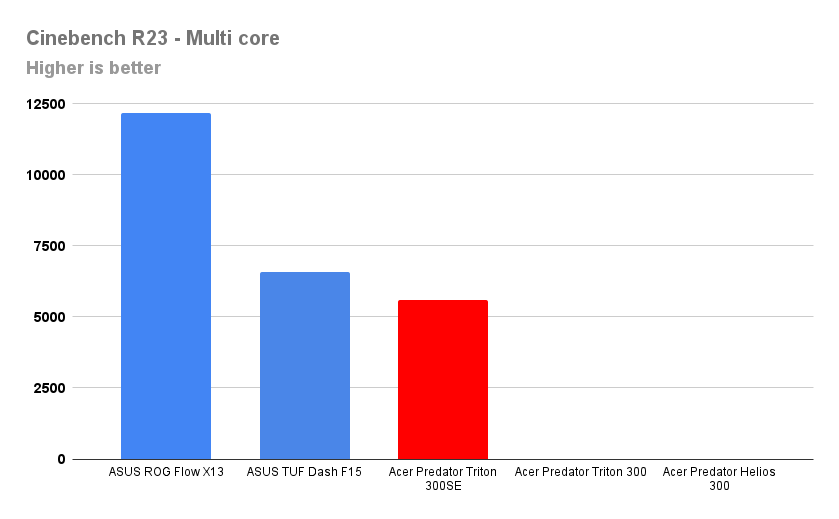
3DMark – Time Spy (DX12)
- Time Spy Score – 6589
- Gaming Score – 7021
- CPU Score – 4888
3DMark – Fire Strike (DX11)
- Fire Strike Score – 15049
- Graphics Score – 18009
- Physics Score – 13467
- Combined Score – 7319
PCMark 10
- PCMark 10 – 5695
- Essentials – 8876
- App Start-up – 12896
- Video Conferencing – 6974
- Web Browsing – 7777
- Productivity – 8538
- Spreadsheets – 9802
- Writing – 7438
- Content Creation – 6615
- Photo Editing – 7762
- Rendering and Visualisation – 7798
- Video Editing – 4783
This PCMark 10 score is respectable. It falls behind the Ryzen systems we’ve tested, however, they have significantly more cores than the quad-core i7 in the Triton 300 SE. It’s still possible to carry out content creation, but if you do a lot of editing and production work a more potent processor may be preferable. In terms of everyday productivity, though, the Triton 300 SE won’t have any problems carrying you through your workload.
Bright Memory Infinite RTX Benchmark
Very High – DLSS Setting: Quality
- 1080p: 44 fps
High – DLSS Setting: Performance
- 1080p: 72 fps
UserBenchMark
- Gaming – 79% Battleship
- Desktop – 98% Nuclear submarine
- Workstation – 69% Battle cruiser
- CPU – Gaming – 88.60%
- Graphics – 85%
- Boot Drive – 337%
Storage
The 1TB M.2 NVMe SSD should be capacious enough for most users but can only be expanded by replacing the SSD with a larger one. Acer has chosen an excellent SSD for the Triton 300 SE, however, with consistently fast speeds resulting in short loading times and excellent system responsiveness.
Sequential read and write speeds of 3603 MB/s and 3027 MB/s respectively are very good and in line with or better than the SSDs in most high-end laptops. This translates into much lower loading times in games, superb system responsiveness and rapid boot times.
CrystalDiskMark
The following are the results recorded in CrystalDiskMark, with figures measured in MB/s
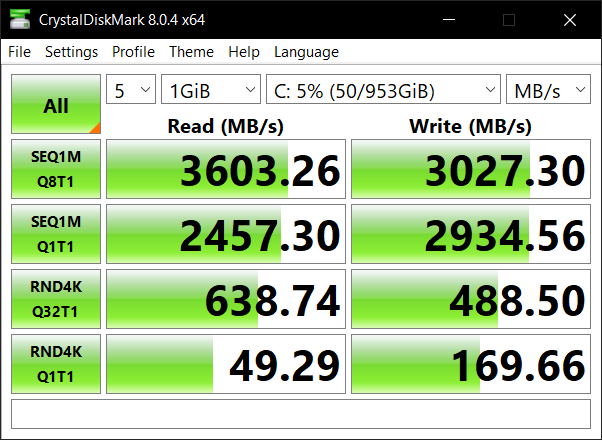
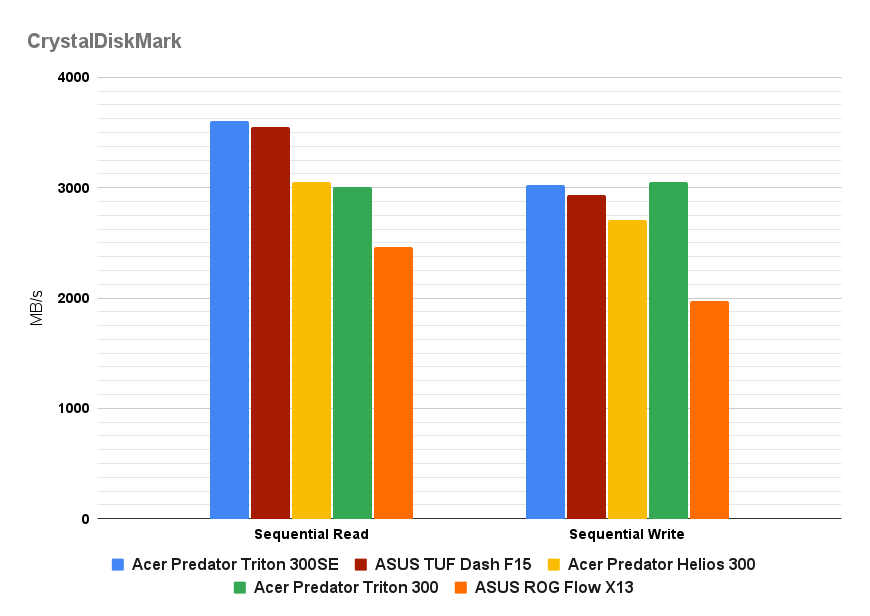
Cooling
This is where my main issue lies with thin and light gaming laptops. With such a small amount of space housing internals producing a lot of heat, it’s very hard to get that heat out of there; system temperatures are among the highest I’ve ever seen, at 66℃. To Acer’s credit, they’ve rammed the Triton 300 SE full of vents and exhausts, as well as their excellent Aeroblade fan technology, but even then it struggles with heat.
Surface temperatures at the rear of the keyboard tray are very high, and hot air blasts from the rear and side vents. Aside from making the laptop a lot thicker to aid cooling, I don’t see how they could have avoided this, though.
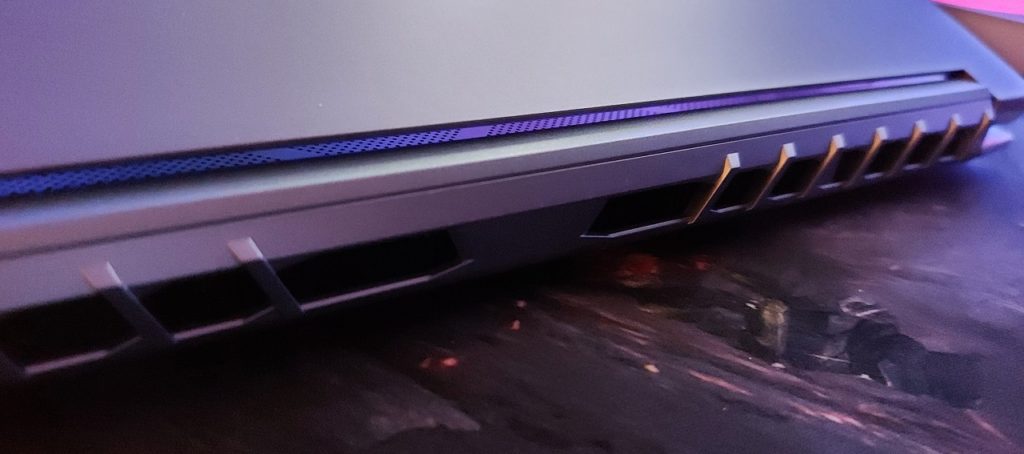
Although the exterior gets hot, the CPU settles around 88℃. There are infrequent spikes up to 100℃, but this is very brief, only occurring when the CPU is first placed under load and is followed by the fans swiftly spooling up.
These peaks are within the tolerances of the CPU, and consistent with other gaming laptops, so it’s not of concern. The GPU averages 69℃ during prolonged gaming sessions and high loads (measured after the TGP firmware increase), which is well within acceptable limits and considerably lower than most systems we’ve tested. If the overall surface and system temperatures weren’t so high, I wouldn’t be surprised if they could push the GPU even harder.
In quiet mode, the laptop is indeed mostly silent, especially if all you are doing is watching a movie. Performance was down by around 30-40% on our system benchmarks, but the system temperatures were still above what we’d consider comfortable – an unfortunate byproduct of stuffing a small frame with powerful components..
Battery life
The Triton 300 SE has power-efficient components, but this is offset by only having a 60Wh battery. In comparison with the 90Wh+ batteries being fitted to other laptops, this means that it only has average battery life that is on par with most gaming laptops.
On battery power, the system can be set to an aggressive power-saving mode, which helps extend the battery life. The Triton 300 SE has a tendency to run apps using the discrete GPU, so to prolong battery life (assuming you don’t need the RTX 3060’s grunt), you can set apps to use the integrated GPU (This is done within the Nvidia Control Panel).
Watching 1080p video played back from an external hard drive, we got around 4.5 hours of battery life. For standard productivity and browsing, we used PCMark 10 running on a loop and averaged around 3.5 hours on a full charge. Gaming puts greater demand on the battery, resulting in 1 hour of play at 50% brightness, with the framerate capped at 60fps. This is quite disappointing, and well below what was expected.
There is a slight quirk in that if there is less than 40% battery remaining, you can’t change the performance mode, even if it’s plugged into the mains. While this won’t bother most people, if you take it to a meeting or lesson, it could be annoying having the fans spooling up while you’re unable to switch to silent mode.
Charging from empty to full is quite fast, it took just 30 minutes to reach 60%, and a total of 55 minutes to reach 90%, however, it slows over the final 10%, trickle charging for a further 15 minutes to hit the full 100% charge.
The Triton 300 SE also supports USB-C charging at up to 100W and can be topped up with power banks, via monitors that support power delivery, or even a mobile phone charger (though this is likely to be a lot slower).
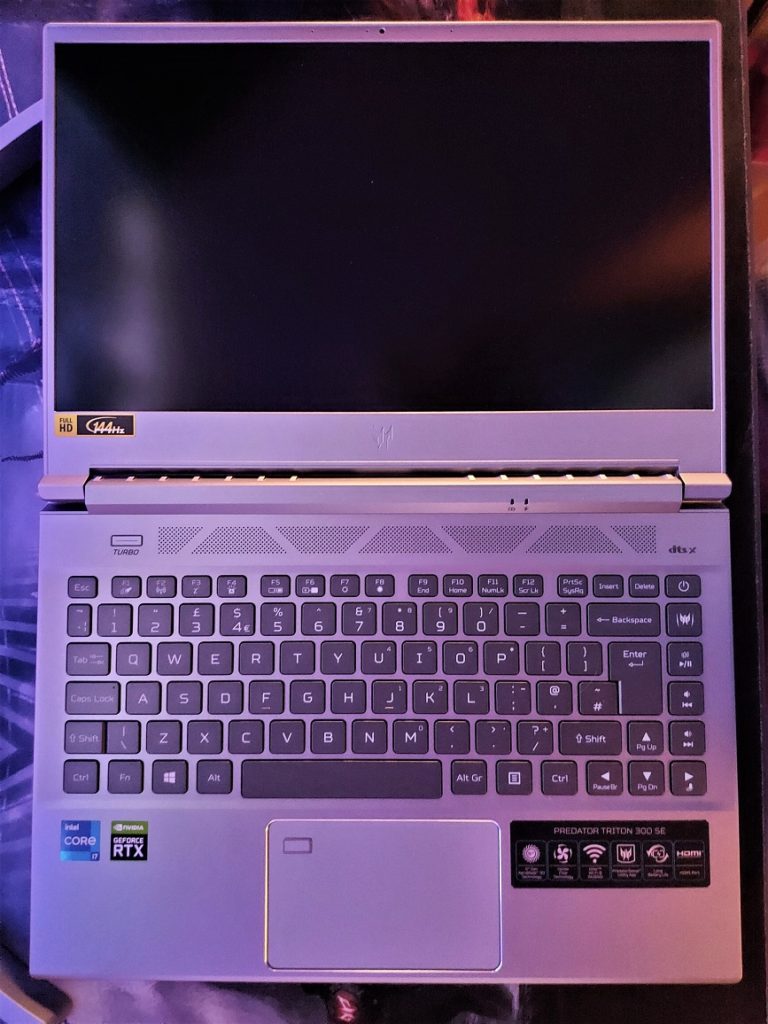
Pricing and alternatives
At £1,399, the Triton 300 SE is competitively priced, and there are very few competitors that can match the performance while staying so compact and portable. The ASUS ROG Zephyrus G14 has a better Ryzen 9 CPU, but you’ll be paying a couple of hundred more for the privilege, and the styling is a lot more shouty than the svelte Triton.
For my preference, and because the Ryzen 9 is more CPU than I need for my workload, I’d go with the Triton 300 SE. If you want an out and out gaming machine, there are arguably better options; this is a machine best suited to those who want a laptop for work and play in equal quantities, and for who portability and discretion is a high priority. If you fit into that demographic, it’s hard to beat the Triton 300 SE.
Summary
There are a lot of reasons to love the Triton 300 SE: The display is gorgeous, with accurate colour and incredible contrast; gaming performance is excellent for both 1080p AAA gaming and competitive esports; the design is stylish, without too much flashy gamer-centric branding, and it’s reasonably priced for what you get.
I would have liked to see an ethernet port included, and a few more IO options, but that’s easily remedied with a USB-C hub. The only other thing of concern is the high surface temperatures, but even then it’s consistent with other slim-profile gaming laptops, and the components aren’t overheated.
If you need an ultra-portable machine for work, but also want to bust out a few games of CoD at high frame rates, the Triton 300 SE is a very attractive proposition. Covid notwithstanding, my work involves a lot of travel, and this is an ideal system for my needs. With many businesses now alternating between the office and working from home, this is likely to suit a lot of consumers.

